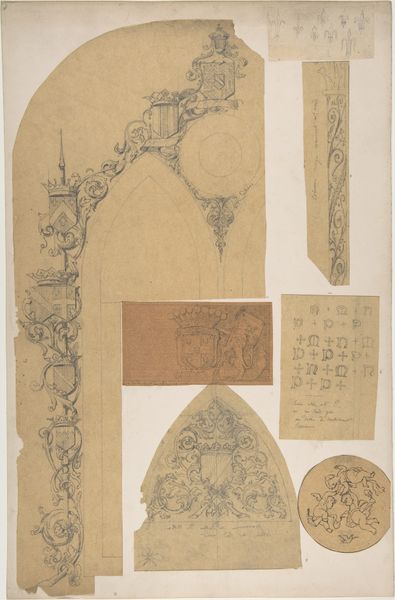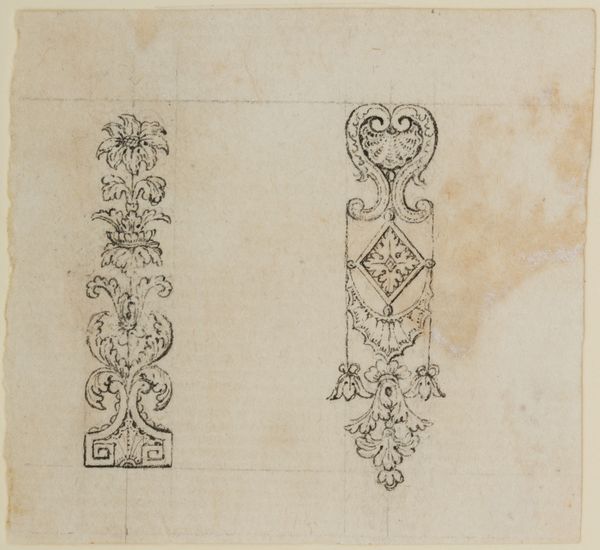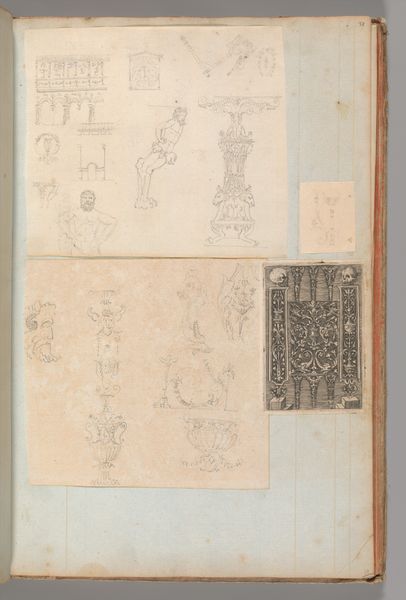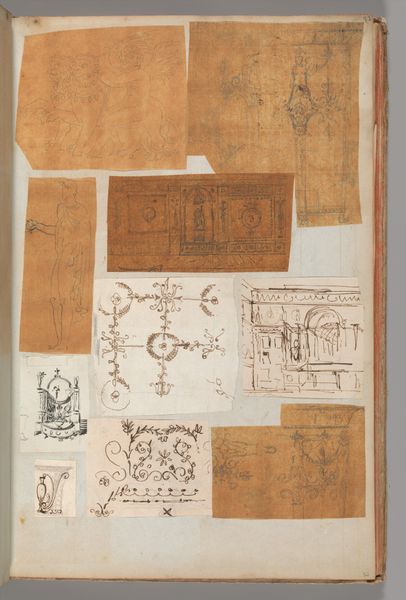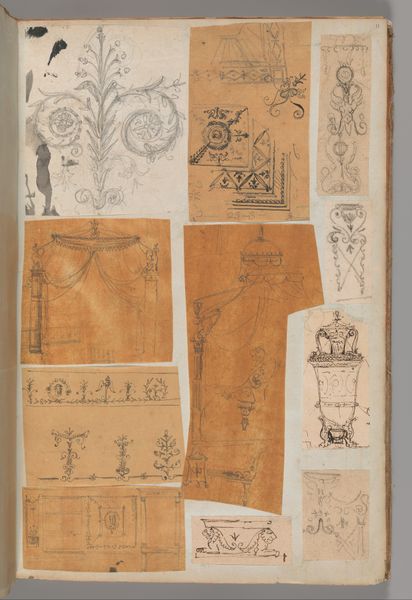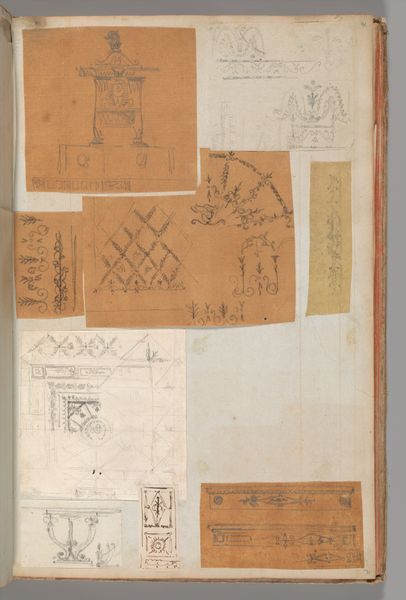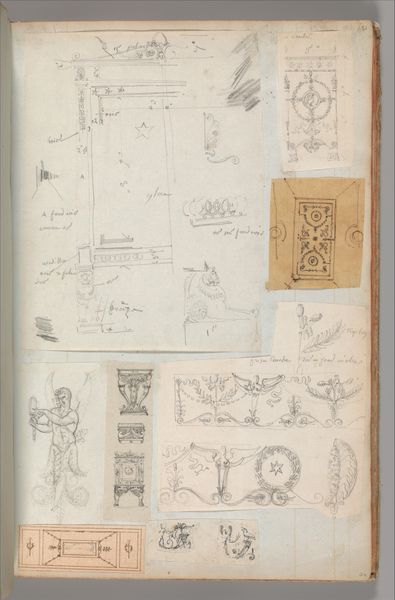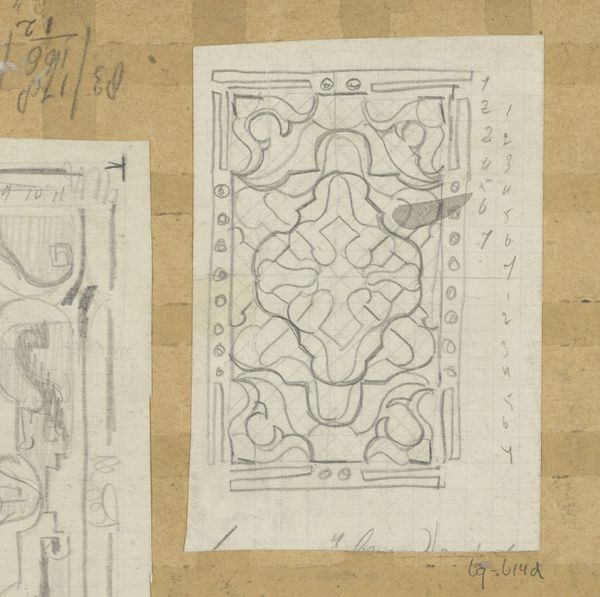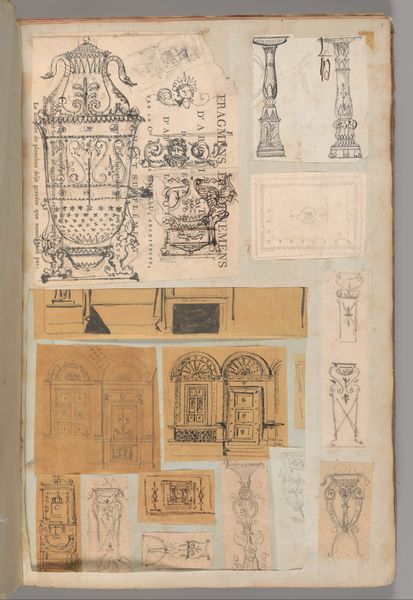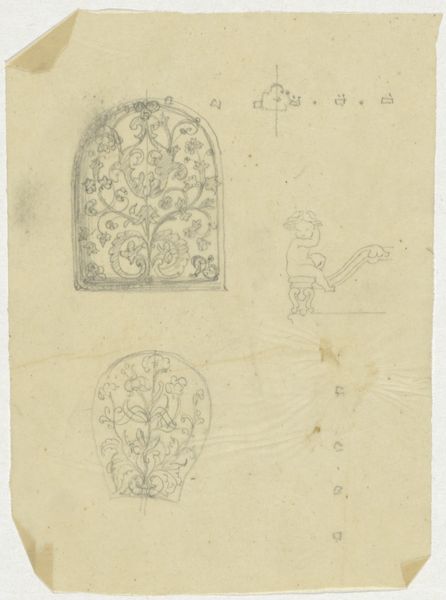
Door Knockers and Mounts from Rouen Cathedral, Goodwich Court, etc. (recto and verso) 1825 - 1900
0:00
0:00
drawing, print, paper, ink
#
drawing
# print
#
paper
#
ink
Dimensions: sheet: 9 3/8 x 15 3/4 in. (23.8 x 40 cm)
Copyright: Public Domain
Curator: Here we have John Gregory Crace’s study, dating from somewhere between 1825 and 1900. The work, titled "Door Knockers and Mounts from Rouen Cathedral, Goodwich Court, etc. (recto and verso)," uses ink on paper. Editor: My first impression is one of architectural scavenging – these delicate ink sketches have an air of almost archaeological recording. They're ghostly blueprints of functional metalwork. Curator: Indeed. Crace, as a prominent interior decorator, was deeply invested in historical precedent. Pieces like these reflect a fascination with sourcing inspiration from the past. Consider the locations cited in the title: Rouen Cathedral alongside Goodwich Court. It speaks to his broad understanding of design across different spheres of life, from the ecclesiastical to the domestic. Editor: Right, I'm struck by the interplay between pure function and the ornamentation, between the hand’s grip and these intricate baroque embellishments, it really elevates what otherwise might be very pragmatic pieces of metalwork. Curator: Absolutely. And thinking about the social context, these aren’t just pretty sketches, are they? This kind of detailing represents wealth, power, and status. In the 19th century, such architectural details were important visual indicators of a family’s or institution's position. Crace wasn't just sketching forms; he was recording statements. Editor: I'd like to return to the formal aspect for a moment, the subtle variances in line-weight and texture that enliven the composition. I keep wondering what each mount or door knocker looked like in its original format; however, viewing these forms through the interpretive hand of Crace somehow imbues the subjects with renewed vitality. Curator: This work shows us that even utilitarian items, door knockers, can carry profound social weight. By appreciating such nuances, we better understand not only the architecture of a building, but also of the social systems to which that building catered. Editor: In this sketch-study, we witness not simply architectural details being recorded, but a certain historical vision of design refined and immortalized. The formal qualities coupled with this recording process have encouraged me to revisit how everyday objects can have surprising complexity.
Comments
No comments
Be the first to comment and join the conversation on the ultimate creative platform.

